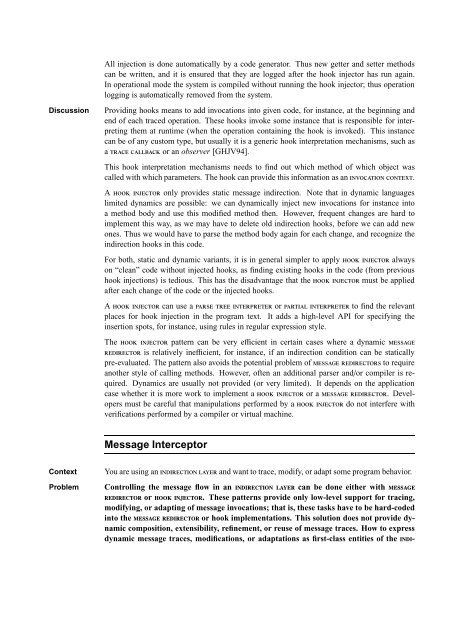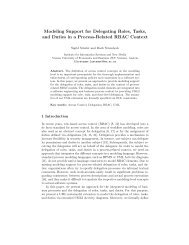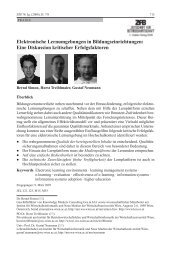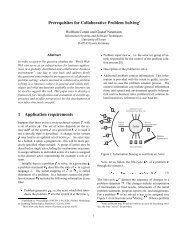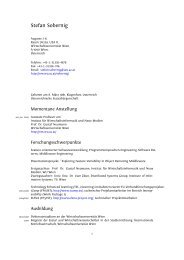Patterns of Tracing Software Structures and Dependencies
Patterns of Tracing Software Structures and Dependencies
Patterns of Tracing Software Structures and Dependencies
Create successful ePaper yourself
Turn your PDF publications into a flip-book with our unique Google optimized e-Paper software.
All injection is done automatically by a code generator. Thus new getter <strong>and</strong> setter methodscan be written, <strong>and</strong> it is ensured that they are logged after the hook injector has run again.In operational mode the system is compiled without running the hook injector; thus operationlogging is automatically removed from the system.DiscussionProviding hooks means to add invocations into given code, for instance, at the beginning <strong>and</strong>end <strong>of</strong> each traced operation. These hooks invoke some instance that is responsible for interpretingthem at runtime (when the operation containing the hook is invoked). This instancecan be <strong>of</strong> any custom type, but usually it is a generic hook interpretation mechanisms, such asa TRACE CALLBACK or an observer [GHJV94].This hook interpretation mechanisms needs to find out which method <strong>of</strong> which object wascalled with which parameters. The hook can provide this information as an INVOCATION CONTEXT.A HOOK INJECTOR only provides static message indirection. Note that in dynamic languageslimited dynamics are possible: we can dynamically inject new invocations for instance intoa method body <strong>and</strong> use this modified method then. However, frequent changes are hard toimplement this way, as we may have to delete old indirection hooks, before we can add newones. Thus we would have to parse the method body again for each change, <strong>and</strong> recognize theindirection hooks in this code.For both, static <strong>and</strong> dynamic variants, it is in general simpler to apply HOOK INJECTOR alwayson “clean” code without injected hooks, as finding existing hooks in the code (from previoushook injections) is tedious. This has the disadvantage that the HOOK INJECTOR must be appliedafter each change <strong>of</strong> the code or the injected hooks.A HOOK INJECTOR can use a PARSE TREE INTERPRETER or PARTIAL INTERPRETER to find the relevantplaces for hook injection in the program text. It adds a high-level API for specifying theinsertion spots, for instance, using rules in regular expression style.The HOOK INJECTOR pattern can be very efficient in certain cases where a dynamic MESSAGEREDIRECTOR is relatively inefficient, for instance, if an indirection condition can be staticallypre-evaluated. The pattern also avoids the potential problem <strong>of</strong> MESSAGE REDIRECTORS to requireanother style <strong>of</strong> calling methods. However, <strong>of</strong>ten an additional parser <strong>and</strong>/or compiler is required.Dynamics are usually not provided (or very limited). It depends on the applicationcase whether it is more work to implement a HOOK INJECTOR or a MESSAGE REDIRECTOR. Developersmust be careful that manipulations performed by a HOOK INJECTOR do not interfere withverifications performed by a compiler or virtual machine.Message InterceptorContextProblemYou are using an INDIRECTION LAYER <strong>and</strong> want to trace, modify, or adapt some program behavior.Controlling the message flow in an INDIRECTION LAYER can be done either with MESSAGEREDIRECTOR or HOOK INJECTOR. These patterns provide only low-level support for tracing,modifying, or adapting <strong>of</strong> message invocations; that is, these tasks have to be hard-codedinto the MESSAGE REDIRECTOR or hook implementations. This solution does not provide dynamiccomposition, extensibility, refinement, or reuse <strong>of</strong> message traces. How to expressdynamic message traces, modifications, or adaptations as first-class entities <strong>of</strong> the INDI-


